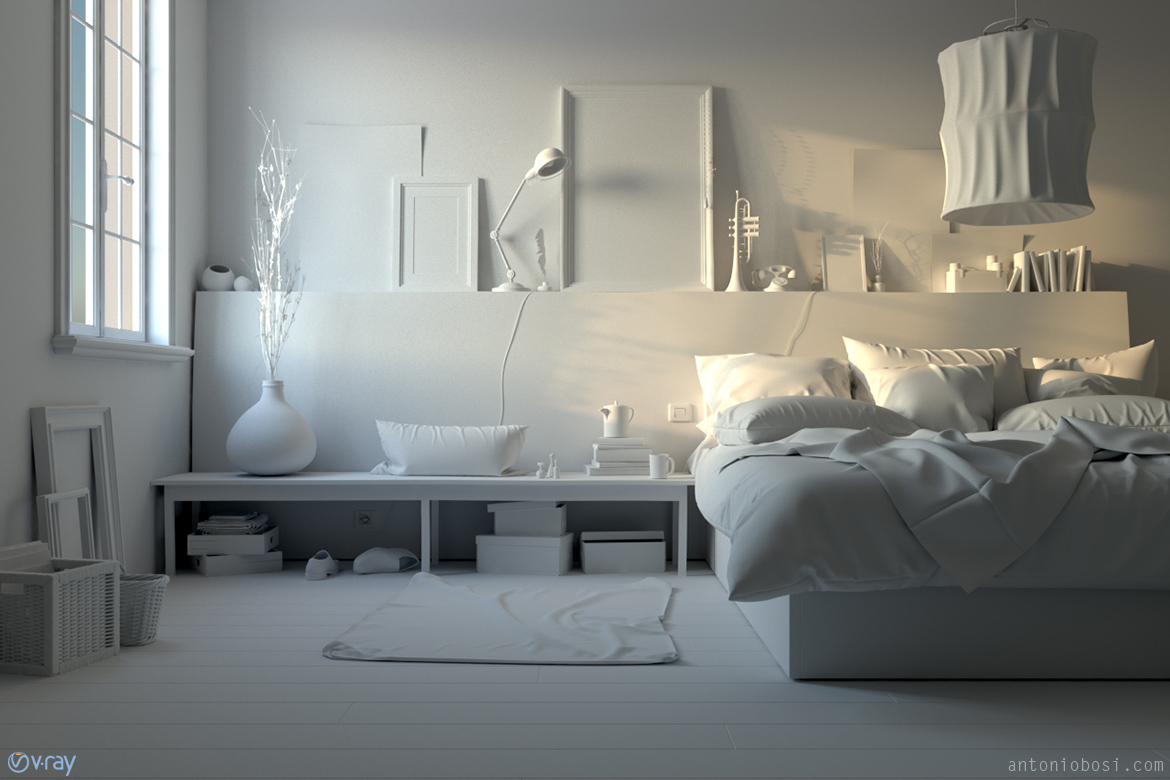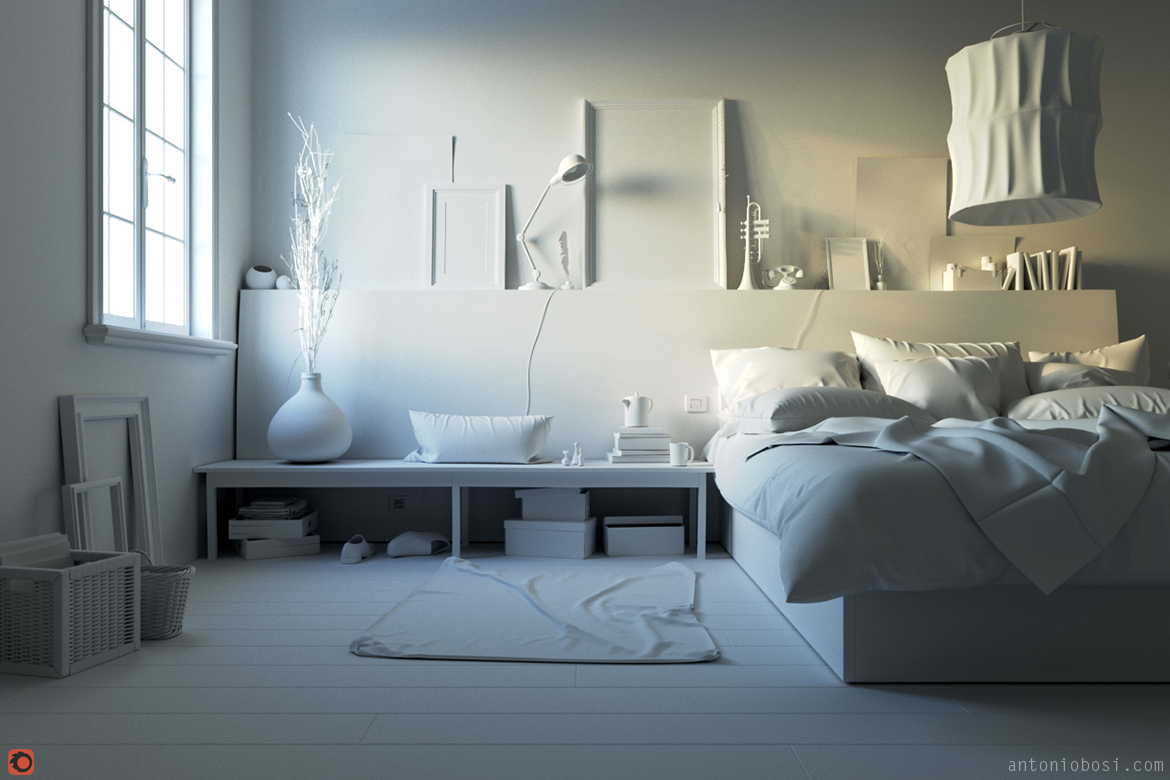
There's much attention around a pretty new render engine: Corona Render. A lot of users are migrating from Vray to Corona render, due to its simplicity and a mixed biased/unbiased physically accurate render engine. In this article I'll show you an interior render Vray vs Corona comparison, are you ready to see the fight between these two contenders?
TYPE: maya guide
CATEGORY: Corona Render, VRay Render, VRay vs Corona
INTRO
There are a lot of contenders to take the crown of the best render engine for architectural renders, nowadays there's a lot of hype around Corona vs Vray. It seems that the king (vray) is loosing many users because of the rise of Corona render. What are the reasons of the success of Corona vs vray? Let's take a quick tour.
CORONA RENDER
Corona render delivers high quality, physically-based shading in production rendering, its features are integrated into Autodesk 3ds Max and Cinema 4D. Corona render born around 2012 as a “proudly CPU based render engine”. It supports both unbiased path tracing and biased UHD cache to deliver a pretty fast but very accurate GI results. It has a stand-alone frame buffer where you can tweak your renders until they are completely clean (Corona uses the Progressive render mode). The interface and the overall logic is similar to the famous Maxell Render.
V-RAY
V-Ray is probably the most famous and used render engine nowadays. It is developed by Chaos Group (Bulgarian: Хаос Груп), a Bulgarian company based in Sofia, Bulgaria, established in 1997. V-Ray is used in media, entertainment, and design industries such as movie, industrial and product design, video games and architecture. It can use traditional biased Raytracing (global illumination, photon mapping) or Brute Force unbiased algorithms. You can use V-Ray with almost any 3d software thanks to their very well written plugins. V-ray also has its own GPU render engine (V-Ray RT) used for IPR renders. I'm going to test V-ray 3.4
THE TEST
I tried to make the overall scene and light set up very simple, just to reduce the number of factors that could enter in the game. Whenever possible I used the same Maya light primitives, I've also put any light source in the same position and with the same intensity. Obviously the rendered images are not identical because any render engine interprets the lights and materials in its own way. There's also a slightly different perspective because I set up 2 different scenes. No post processing. V-ray 3.4, Corona Render 1.5
HARDWARE
I used an average pc: CPU I7 2600k @ 4.4GHz (to give you and idea of its compute power the Cinebench R15 Score is 758), 32GB DDR3, Nvidia GTX 1060 6GB, SSD 500gb. Win 10 pro 64 bit
FIRST TEST: INTERIOR RENDER
Same scenario for both render engines: Sun&sky + area light. The scene consists of 3M vertices, plain polygons, 3 diffuse bounces, no caustics, SSS, dispersion effects, hair or fur. I kept the environment pretty flat to make us clearly see and compare both noise and render quality. Brute Force + Light Chace for V-Ray, Brute Force + UHD for Corona. 1 hour of render for both.


At glance no big differences, anyway I like a lot the Corona tone mapper: it is very easy to correct burned highlights and bad shadows without loosing contrasts. By default, the Corona's sky casts a more saturated blue compared to the Vray's sky. Just take a closer look to see some significant details:

Vray did a much cleaner render but the Corona render has much more GI details. Take a look at the carpet and to the bed's wrinkles: Corona wins but it has a lot of noise. I think I could get rid of noise in 1-2 hours more.
CONCLUSIONS
V-Ray is the old king, tons of tutorials, material libraries and 3d models V-Ray render-ready. It has a large set of options and if you know how to tune them you can beat Corona in Speed but not in GI detail, but the Unbiased/Brute Force approach is way slower than Corona. Vray also supports GPU rendering, which can become a game changer in the future. More complex than Corona (it can be good for power-users but not for the average one). Much expensive than Corona.
Corona is faster if you like the unbiased approach. It is way simpler than V-ray to set up and obtain good results. Corona lacks some advanced features but the development is fast, you have also a pretty limited choice regarding the 3d software to use (Maya is not supported). Corona is much cheaper than v-ray (but you have to pay the license monthly, there's no one time payment option).
Fell free to share your opinion and your experience in the comments below!
Antonio
Related guide: V-ray vs Mental Ray 2017







5 thoughts on “VRay Vs Corona: interior render comparison, speed test and review”
😀 😀 😀 😀 😀 😀 😀 😀 😀 😀 😀 😀 😀 😀 😀 😀 😀 😀 😀 😀 😀 😀 😀 😀 😀 😀 😀 😀 😀 😀 😡 😡 😡
😀 I think I could get rid of noise in 1-2 hours more. Havbe you tried denoise post in corona? It does not take that long to denoise image.
You can buy the corona box license. That’s a one time fee. And Corona Support is nothing short of great (unless your requests are silly/unreasonable).
V-Ray is much more change averse than corona because it has a far larger user base, which slows down its progress and ease of use updates.
Still, if you know what you are doing, it can be made to render a little faster. But, definitely not better, nor easier. Corona wins the crown today. We’ll see about tomorrow 😉
Well, My critics would be:
Vray image is much better. Recently I trialed both software. Vray is faster and more accurate despite that it uses biased method. The corona renderers image shows too much contrast for a skylight. Otherwise both images are too bright for the time of the day… Its a wrong setup.
In my opinion corona is too slow and not supporting too many features yet and its result is somewhat odd. I think they could understand better the lighting and the result of it. Maybe its due to over optimization of path tracing? I don’t know.
Vray is good but the development stalling and the programmers seems unable to come up with a proper competitive solution for cpu/gpu.
Both partys support team not up to the task to explain customers the solution to their problems, and understanding the problems seems to be off. Even video recording doesnt seem to help it.
Vray team for example asked for a screen shot of a fronzen windows when ray bunch settings were set above the max. How could anyone make a screenshot of it or what use of that would be?
unfortunately new renderers takes the lead. And they dont have that many features.
Hey, I found your arguments interesting, as I do use both softwares, I do get frustrated a lot by both of the support teams.
You end your message by talking about new renderers, I have to ask, which renderers have you tested that you find more satisfying than either vray or corona?